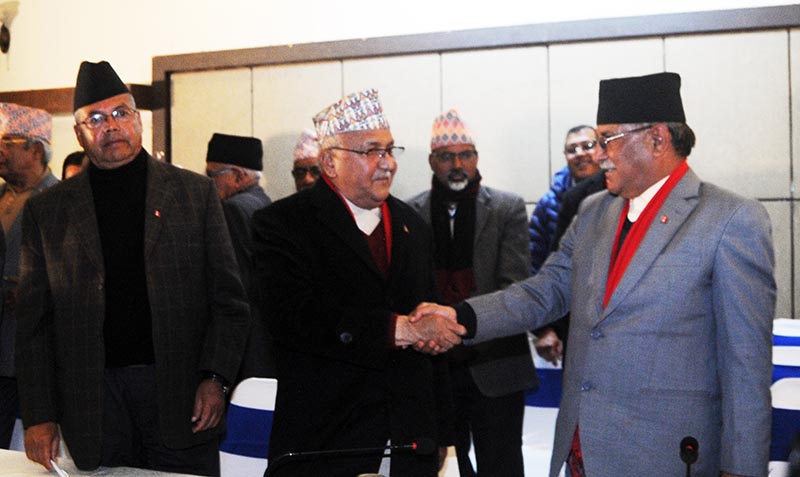Left alliance task force lowers provincial cabinet ceiling by half
Kathmandu January 25
Although the constitution stipulates that the size of provincial cabinet can be one-fifth the size of the respective provincial assembly, a task force formed by the CPN-UML and the CPN-Maoist Centre today proposed that the number of ministries in a provincial government should not exceed 10 per cent of the provincial assembly’s strength.
This effectively means that provincial governments will have five to 11 ministers, depending on the size of provincial assemblies, said UML’s Surendra Pandey, who is a member of the task force.
The left alliance is in a position to form provincial governments in all provinces except Province 2.
Article 168 (9) of the constitution stipulates that a provincial government can have a Council of Ministers not exceeding 20 per cent of the strength of the provincial assembly, including the chief minister.
There are 550 provincial assembly members in seven provinces. If the constitutional provision is strictly followed then there will be around 110 provincial ministers in the country, but if the left alliance limits the provincial cabinet to one-tenth of the strength of the provincial assembly, then there will be around 55 provincial ministers.
The federal Parliament will have 334 members with 275 in the House of Representatives and 59 in the National Assembly.
As per the constitutional provision, the federal Cabinet cannot have more than 25 ministers, including the prime minister, which is less than seven per cent of the members of the Parliament.
“Since the size of the federal Cabinet is seven per cent of the Parliament, we decided to limit the size of provincial cabinets to one-tenth of the provincial assembly,” Pandey said.
According to Pandey, the task force will decide on provincial chief ministers and speakers on Sunday.
The UML can form single-party government in provinces 1 and 3. The left alliance has not claimed that it will form the government in Province 2, where Madhes-based parties -- the Rastriya Janata Party-Nepal and the Federal Socialist Forum-Nepal, can form the government.
The CPN-MC wants its chief ministers in provinces 6 and 7, but the task force has yet to decide on its demand.
The UML and the CPN-MC have already reached an understanding to make UML leader Shankar Pokharel the chief minister of Province 5.
He did not contest the parliamentary seat from his constituency in Dang, as he supported CPN-MC leader Krishna Bahadur Mahara.
Seven proposed ministries
KATHMANDU: According to Minister for Physical Infrastructure and Transportation Bir Bahadur Balayer, the Cabinet named seven ministries for the provincial assemblies on Tuesday based on suggestions from the parliamentary state committee and the High-Level Administration Restructuring Committee. Provincial ministries suggested by HLARC are:
- Cabinet and the office of the chief minister
- The Ministry for Economic Development
- The Ministry for Agriculture, Cooperative and Land Management
- The Ministry for Home Affairs
- The Ministry for Infrastructure Development
- The Ministry for Forest, Science and Environment
- The Ministry for Education, Health and Social Development






